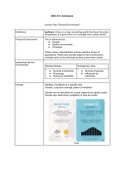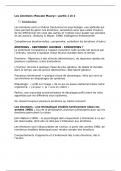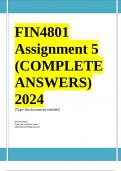Resume
Summary BDE 214: Individuals
- Cours
- Établissement
A 30 page summary of all information covered in the lectures of Individuals, BDE 214. This summary contains the given work from the power points and extra definitions, explanations and diagrams from online resources. Tables and bullet points are used to aid memorisation.
[Montrer plus]






